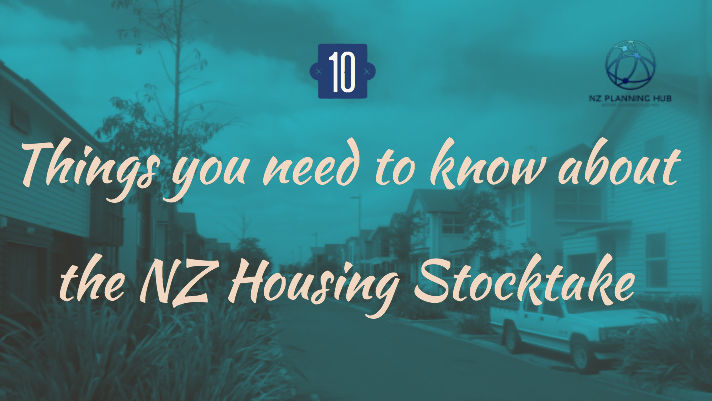10 things planners should know about ‘A stocktake of New Zealand's Housing - February 2018’
- Angela Goodwin

- May 10, 2018
- 2 min read

What is it
A stocktake of New Zealand's Housing (February 2018) is a “warts and all” look at Housing in NZ. “ (P2). It is part of the information that the Government will use to write and implement policies on Housing. It was written by Alan Johnson, Philippa Howden-Chapman and Shamubeel Eaqub.
What You Should Know
Planning can make housing shortages better or worse
There is a shortage of houses and demand over the past 10 years is greater than the rate of house construction. Urban planning is a solution to this but also has created the problem. “Yet, although councils have a critical and legitimate role in shaping urban development, urban planning is seen as a significant barrier by many in the development community.”
Inclusionary zoning
House prices and market rents are increasing. The rate of increase is faster than the rise in incomes. This contributes to unaffordable housing. In faster growing urban areas, inclusionary zoning is seen as a partial solution.
Unlocking land supply and higher density
Urban planning is the key to unlocking land supply and higher density so that more houses can be built.
Strategic planning
Urban planning should plan far enough ahead with a margin that ensures sufficient land supply but avoids urban sprawl.
The Planner as a bouncer or an usher
A lack of resources in fast growing urban areas means there are not enough planners to process all the consents being lodged. Councils can either act as a bouncer or an usher. Tight timeframes and a lack of resources is an incentive for Councils to delay consent processing. Planners can also act as ushers (if they have more time), improving the quality of applications.
Amenity for occupants
The average tenancy is 2 years. With an increase in the shortage of houses and decrease in home ownership it can be difficult to find rental properties that are well located.
Poor quality houses
Some of the housing stock is uninsulated and not of great quality. Houses are on average colder than in more extreme climates. This contributes to hospitalisation and illness that could otherwise be prevented.
Constrained Infrastructure
Infrastructure is a constraint to growth. A lot of Councils have high amounts of debt to fund infrastructure. There are questions about whether this is sustainable when Councils incur the costs of growth but do not see a lot of the financial benefits of it (aside from rates).
Rising Homelessness and People Living in Temporary Accommodation
Whilst there is missing information, it seems that homelessness and the number of people living in temporary or crowded housing is increasing.
Barriers faced by the construction sector
The construction and finance sectors are volatile. Comparatively, the construction sector in New Zealand is small. This combined with uncertainty makes long term investments like pre fabrication challenging.
Further Reading
https://www.beehive.govt.nz/sites/default/files/2018-02/A%20Stocktake%20Of%20New%20Zealand%27s%20Housing.pdf




Comments